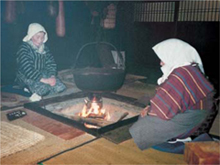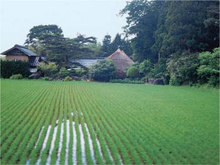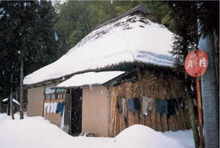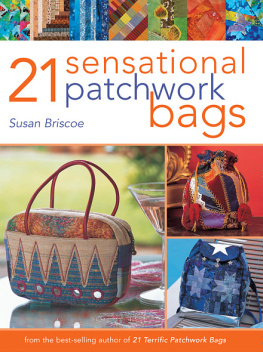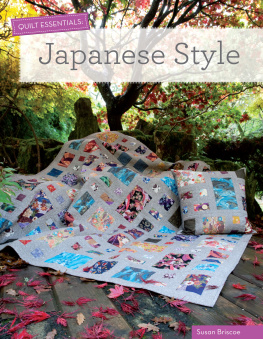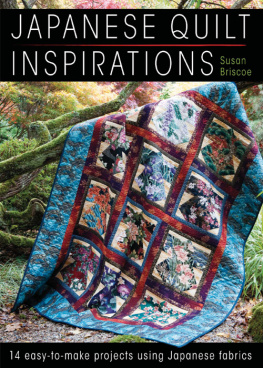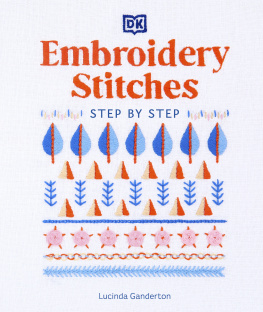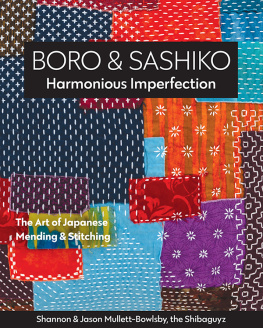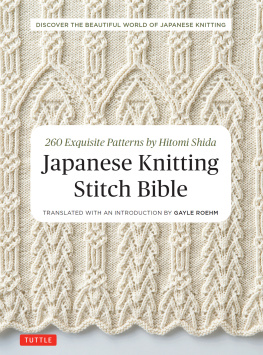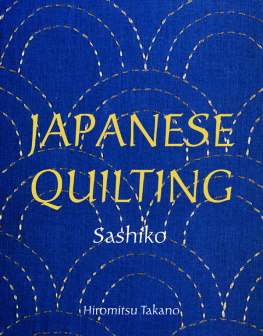Contents
Guide
THE Ultimate
SASHIKO
SOURCEBOOK
Susan Briscoe

For Mayor Kiichiro Onedira and the people of Yuza-machi, Yamagata Prefecture, Japan thank you for a wonderful year!
CONTENTS
INTRODUCTION
Sashiko is the magical country stitching of northern Japan. Pronounced sash(i)ko (the i is almost silent), it means little stab or little pierce, an accurate description of the stitching action. Originally invented for warmth and thrifty recycling, strengthening work clothes and household goods, sashiko combines country style with intricate designs all made with simple running stitch.
Handed down from mother to daughter, from hand to hand, in farming and fishing communities, practical and decorative sashiko created a unique style. White running stitches on indigo blue recall snow falling around the old farmhouses, while inside, women stitched beside the irori hearth, conjuring patterns from thread and cloth.
Most old sashiko has all-over designs of varying complexity, adapted from popular patterns. Mastering these patterns is the key to really understanding sashiko its not just stitching Japanese designs in outline! Sashiko sometimes includes motifs or a kamon(family crest) or has larger pictorial elements worked in running stitch.
I first saw sashiko stitching in 1991 in Yuza-machi in the western Shonai district of Yamagata Prefecture, Japan (a Prefecture is like a large county). I was given two pieces a business card holder and a small mat. I was fascinated but, as a busy English teacher, I didnt have time to learn how to stitch sashiko properly. When I returned for the millennium New Year celebrations I wanted to learn.
Mayor Ken Onedira introduced me to local sashiko teacher Chie Ikeda, who taught me to sew hitomezashi, the small stitch patterns traditional to Shonai. My friends took me to see many inspiring works, old and new. My former neighbour, Reiko Domon, was also stitching sashiko and teaching the local quilt group. Old and new friendships finally led to the Magic of Sashiko exhibition at the inaugural Festival of Quilts in Birmingham, England in 2003. Chie, Reiko and seven sashiko experts made the trip and we taught more than 150 visitors over four days, proving that stitching is a universal language. Sashiko was described as fascinating, therapeutic, relaxing and even addictive!
Nowadays, we dont have to be thrifty to stitch sashiko. The great variety of traditional patterns will inspire your creativity there are over 100 patterns in this book. The book starts with a brief but fascinating history of sashiko. This is followed by a section describing everything you need to know to get started the materials and equipment needed, how to mark designs and work the sashiko stitches. There is then a selection of easy projects to whet your appetite. Favourite traditional patterns appear in the extensive Pattern Library beginning on beginning on page 110.
As a sashiko teacher in the United Kingdom, I have been asked many questions. I hope this book will give you the answers, with much pleasurable stitching along the way. Reflect the spirit of rural life with sashikos classic combinations of indigo and white or echo the colours of the landscape in your creations as you capture the magic of sashiko in your work.
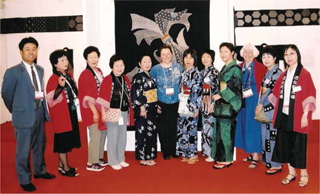
The Magic of Sashiko team at the Festival of Quilts, England 2003. The large panel behind us is called Noshi by Keiko Hori, 1988 (see picture opposite) and the long narrow panel in the background is Shonai Sashiko Sampler by Cheiko Hori all 13 yards of it! (See also Inspiration Gallery, .)
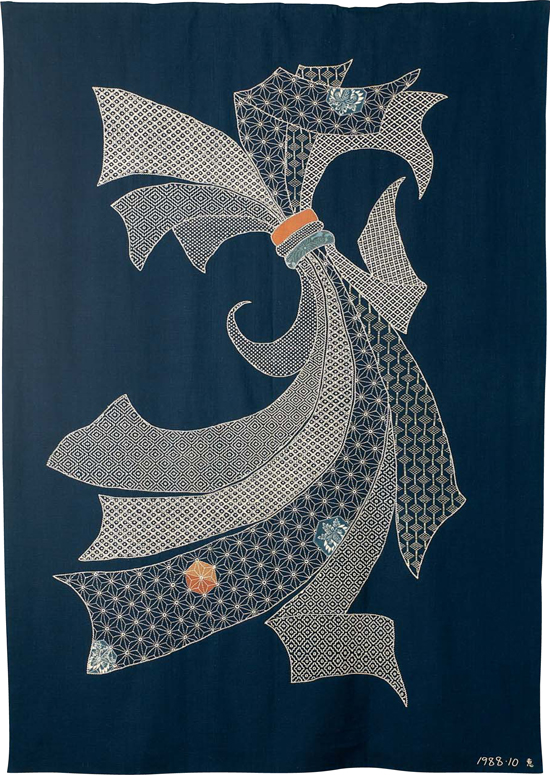
Noshi wall hanging by Keiko Hori, featuring patterns traditional to Yuza-machi. All the thread is creamy white, the illusion of colour created entirely by the varying density of the patterns. From left to right, below the bundle centre are: jjizashi, sanjkakinohanazashi, kusari jjizashi, asanoha, kakinohanazashi and sorobanzashi (.
A SASHIKO HISTORY
The origins of sashiko stitching are lost in the mists of time. There are no written records of its real beginnings, no original surviving piece of work that can be conclusively dated or attributedto an individual or group. Born of necessity, sashiko was used and worn out, so very little early work remains. Decorative sashiko must have begun as someone repaired clothing, sewing tsukuroi sashi (darning sashiko), economically using undyed thread on dark indigo cloth and realizing the decorative possibilities in the stitches.
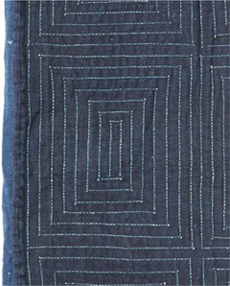
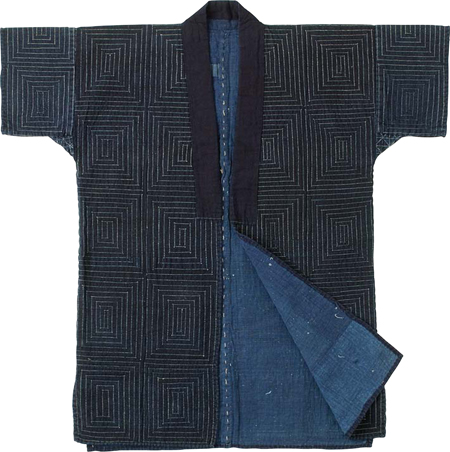
Late 19th-century mans nogi (work coat) from Yuza-machi, Yamagata Prefecture showing raimon (spiral) through two layers of indigo cotton. Work clothes were cut from old kimono.
COLLECTION OF CHIEKO HORI, YUZA-MACHI
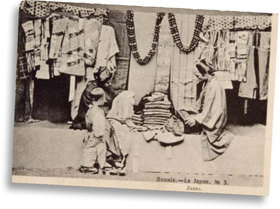
Second-hand clothes shop, c.1900. Lengths of striped and checked fabric are displayed in the centre, with childrens kimono and jackets on either side.
POSTCARD, AUTHORS COLLECTION
Sashiko evolved as a rural domestic craft in Japan during the Edo era (16151868), a time of increasing prosperity and peace after more than a hundred years of civil war. It made cloth stronger, improved its thermal qualities and recycled worn-out textiles important at a time when all fibres were hand spun, hand woven and hand dyed in labour-intensive processes, from linen, hemp, ramie and other bast fibres. Fabric was remade into work wear, then into bags and aprons and finally into cleaning cloths, all with sashiko. By the Meiji era (18681912), sashiko was established as winter work in northern farming communities, when heavy snowfall restricted outside activities. Hand sewing was vital to a rural domestic economy and skill in sashiko was essential for a young girl wanting to make a good marriage. Girls and young women attended village needlework schools during the winter, when farm work was slack, where sashiko was passed down from hand to hand. Learning sashiko helped to instil values of patience and perseverance essential qualities for a farmers wife.
